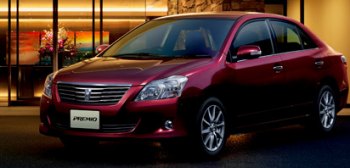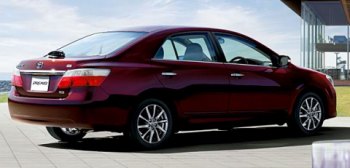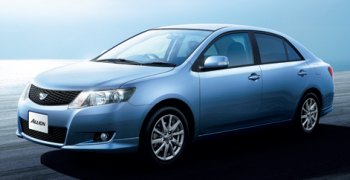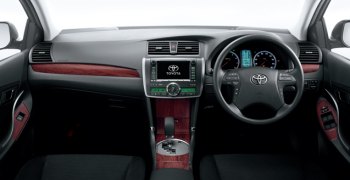|

|

|
| Premio |
|
These
are one of the most unappealing cars in Toyota’s lineup. They were
designed for the domestic market only and target at people aged 40s or
so, with conservative taste and limited driving desire. Many will be
used as company cars. They are sized and priced between Corolla and
Camry. Like Nissan found with its Bluebird Sylphy, the Japanese market
demands mid-size cars that are smaller than their counterparts in
America (now also Europe) because they are more friendly to road tax
and parking. This is why Camry never found great success in its
domestic market. For this reason, Toyota continues to offer Allion and
Premio for its domestic market. Their bloodline could be traced back to
the late Corona.
The two are basically the same car except the face and minor styling
tweaks. Premio is supposed to be more luxury and traditional, while
Allion appears to be younger – but just in relative terms. Neither cars
can be considered as stylish. They look like a bridge between Corolla
and Camry and continue the conservative design theme of tradition
Toyota sedans. Both are built on a stretched Corolla platform, whose
wheelbase is 2700 mm instead of 2600 mm. The additional wheelbase
certainly frees up the front and rear legroom, but the same 1695 mm
width means squeezing 3 adults into the rear seat will be difficult.
The interior works exactly as a traditional sedan, without any new
features to surprise you. The design and colors are also boring.
However, we have no doubt in the solid build quality of Toyota.

|

|
| Allion |
|
The twins are
designed to be cost effective and economical to run. They offer a
fuel-saving CVT and 3 choices of engines: 110hp 1.5-liter VVT-i (which
falls in lower tax band), 136hp 1.8-liter dual-VVT-i and the new 158hp
2.0-liter dual-VVT-i with Valvematic. The latter is Toyota’s equivalent
to BMW’s Valvetronic, which continuously varies the lift of intake
valves to reduce pumping loss and improve breathing efficiency. To a
1270 kg machine, the 158hp engine is plenty powerful. What a pity CVT
is never as responsive as a manual gearbox. Anyway, in Japan no one
buys manual gearbox these days.
The Allion and Premio are designed to run smoothly and comfortably
rather than delivering sporty handling. This mean their suspensions are
tuned quite soft, while the electrical power steering has typical
Toyota character – light and lifeless. The torsion-beam rear
suspension, as carried over from Corolla, is not what a mid-size car
could be proud of. However, when the application biases towards
civilized use and the roads are as smooth as those in Japan, there
seems to be nothing wrong to employ a cheaper suspension, save the cost
and reward the customers with a lower price tag. The problem is, these
two cars are content to be mediocre and has no intention to strive for
excellence. With this attitude, they will never catch the heart of us.
|